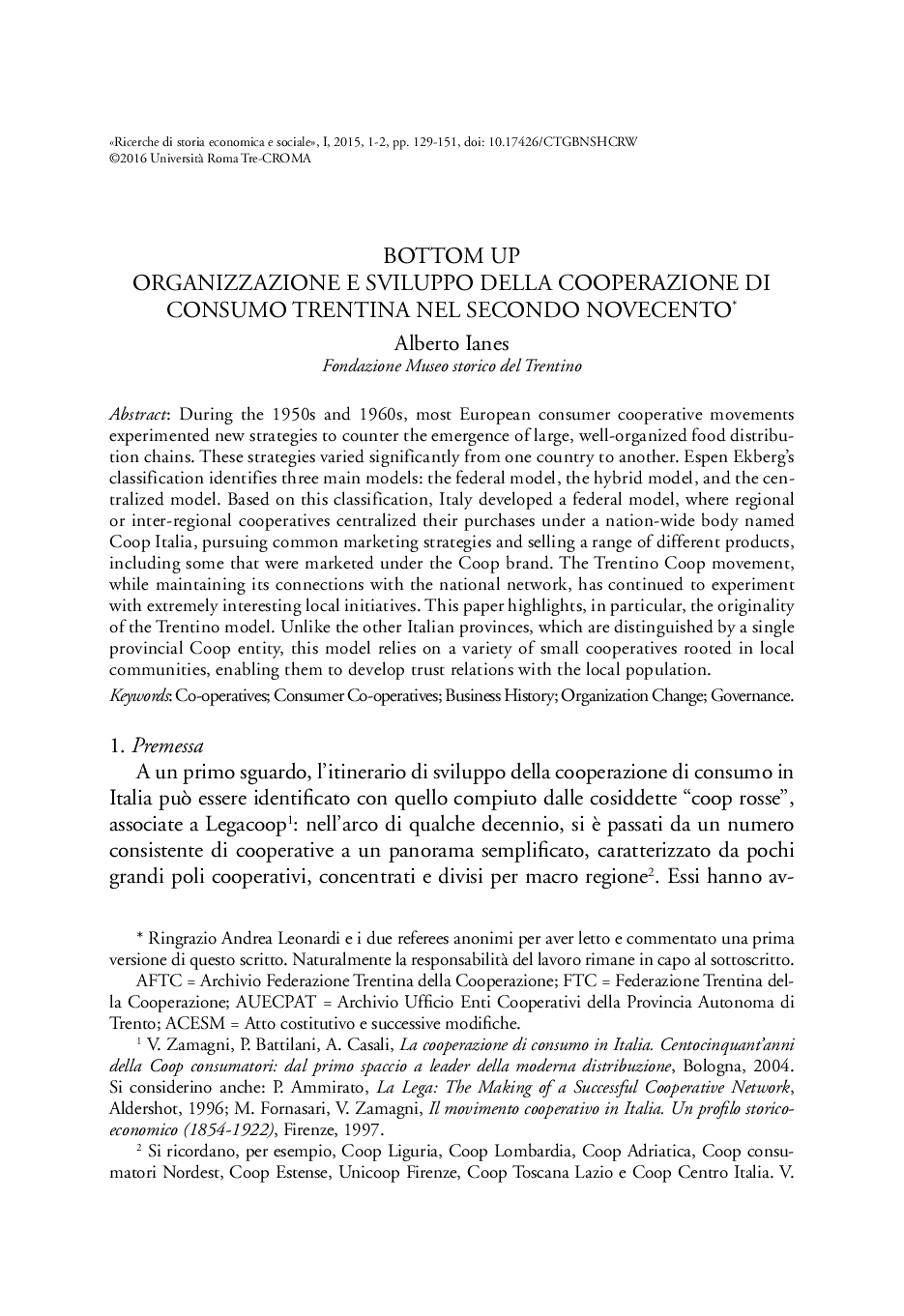Indice dei fascicoli
RISES » 2015/1-2 » Cibo in età moderna e contemporanea tra produzione e consumo (secc. XVIII-XX)
ISSN 2499-2321
Ianes Alberto
Bottom up. Organizzazione e sviluppo della cooperazione di consumo trentina nel secondo Novecento
pp.129-151, DOI 10.17426/CTGBNSHCRW
Articoli
Abstract: During the 1950s and 1960s, most European consumer cooperative movements experimented new strategies to counter the emergence of large, well-organized food distribution chains. These strategies varied significantly from one country to another. Espen Ekberg’s classification identifies three main models: the federal model, the hybrid model, and the centralized model. Based on this classification, Italy developed a federal model, where regional or inter-regional cooperatives centralized their purchases under a nation-wide body named Coop Italia, pursuing common marketing strategies and selling a range of different products, including some that were marketed under the Coop brand. The Trentino Coop movement, while maintaining its connections with the national network, has continued to experiment with extremely interesting local initiatives. This paper highlights, in particular, the originality of the Trentino model. Unlike the other Italian provinces, which are distinguished by a single provincial Coop entity, this model relies on a variety of small cooperatives rooted in local communities, enabling them to develop trust relations with the local population.
Keywords: Co-operatives; Consumer co-operatives; Business history; Organization change; Governance

Referenze
- download: n.d.
- Url: http://archivio.centroricercheroma.it/?contenuto=indice-dei-fascicoli-rises&idarticolo=1210
- DOI: 10.17426/CTGBNSHCRW
- citazione: A. Ianes, Bottom up. Organizzazione e sviluppo della cooperazione di consumo trentina nel secondo Novecento, "RiSES", I/1-2, pp.129-151, DOI: 10.17426/CTGBNSHCRW

